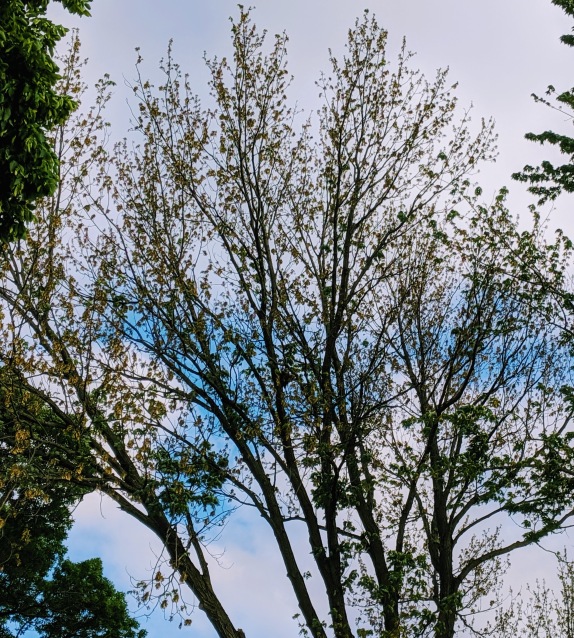May 28-29: Tractor Safety Training, Extension Office, Grand Island, (308) 385-5088, https://go.unl.edu/mcyy
May 30: Made in the Shade-Trees for Nebraska Landscapes, 6-7:30 p.m., 4-H Bldg-Fairgrounds, York, RSVP: (402) 441-7180May 30-31: Tractor Safety Training, Extension Office, Kearney, (308) 236-1235, https://go.unl.edu/mcyy
May 31:Introductory Hop Growing Workshop, 3:30-5 p.m., 199 Plant Sciences Hall, UNL East Campus, Lincoln, RSVP: 402-472-2811
May 31:Hop Training Field Program, 5-6 p.m., 199 Plant Sciences Hall, UNL East Campus, Lincoln, RSVP: 402-472-2811
What a blessing last week was for many to be in the fields to either finish or start planting! And, while some may not want it, we could also use some rain to help with the crusting issues that have been developing in various fields due to the warm temperatures and wind. As you assess stands, the following article provides some guidelines on what to look for and any replant considerations for corn: https://go.unl.edu/j727.
For those who planted soybean earlier into cooler soil conditions, Dr. Jim Specht also did so on different dates this year and monitored air/soil temperatures at the former ARDC near Mead. Air temperature daily lows were less than 36°F on eight days (five of which were 32°F or lower), were less than 40°F on 17 days, were less than 44°F on 23 days; and notably, were less than 48°F on 31 of the 37 days. I’ve talked about desiring a 24 hour window of near 50F temps for avoiding potential seed chilling of soybean. It’s based off some Canadian research that showed soybean completing the imbibitional (water uptake) phase in as little as 8-24 hours. Jim had a demo study this year in which he placed water into furrows and planted soybean seed 1.25” deep into the furrows on various days in April at 2:30 p.m. Adding water to the furrow was to hasten the imbibitional phase. There’s a slideshow with the full article in this week’s CropWatch at: https://go.unl.edu/yu2m. The article shows the seeds in this demonstration did not appear to be impacted by chilling injury in spite of low air/soil temperatures on some of the days including within a 24 hour period. The hypothesis is that planting in a warmer part of the day with good soil moisture allowed the imbibitional phase to complete more rapidly before the cold snaps occurred in the evening/following day. While this was only a demo, it spurs many questions. Further research to better document chilling injury and imbibitional period for different soil temps/moisture contents would hopefully help growers planting soybean in April.
Silver and Red Maple Trees: While back home helping with planting, I was also receiving numerous tree questions. For those with malformed leaves or various leaf coloration, I’m thinking that’s mostly due to the cool temperatures we’ve experienced. Malformed leaves can also be due to growth regulator herbicides such as 2,4-D (from weed and feed products or sprays) being applied to lawns when trees are beginning to leaf out.

For the past few weeks, I was observing the slow leaf-out of silver maples in town…even where portions of trees were leafing out and other portions seeming bare. Now, if your maples look like mine, they look brown and barewith huge seed production and minimal leaves. This can also be seen in red maple varieties such as the popular ‘Autumn Blaze’ maples from my observation. For everyone who called or texted, I told you I was assuming it was due to the cold snaps and frosts affecting trees leafing out. It also could be a result of the hard winter. Trees are interesting as stresses from previous years can also affect them several years down the road. While all that’s true, what I didn’t realize is that based on information from Ohio and Michigan State, frost at specific times trigger whether a tree goes into seed or leaf production. Maple trees produce very small flowers that turn into seeds every spring. Frost will kill some of the blossoms if received at the right time which leads to less seeds and more leaves. Even though it was a cold spring, perhaps fewer blossoms were killed than normal at the right time? It could also just be the natural cycle of heavy seed production this year? Regardless, the trees can’t support both massive seed production and leaf production, so many opted for seed production. The good news is that shade trees in general have an ability to shoot new leaves after being stressed. I see this every year after trees lose leaves due to herbicide damage, insects, diseases, or environmental conditions. So, give the trees a couple of weeks and you should begin to see new leaves developing. Don’t add fertilizer or other products to them as it’s not necessary and can actually stress trees that are stressed even more. By summer, the trees should look fairly normal. If they don’t, perhaps there’s another stressor occurring with your tree? The biggest culprits I see are roots that girdle (choke) the tree by wrapping themselves around the trunk or damage to the trunk from weed whackers.
What about those seeds in lawns and gardens? Some pre-emergent lawn herbicides will keep them from sprouting. Pulling them is time consuming, yet a valid option that’s best done as soon as seedlings emerge. Mowing may help keep some of them at bay. Weed and feed products for lawns often contain 2,4-D so using that or lawn care products with 2,4-D can be an option (just be sure to read the pesticide labels). Products like Preen can be pre-emergent options for flower beds/gardens.

































